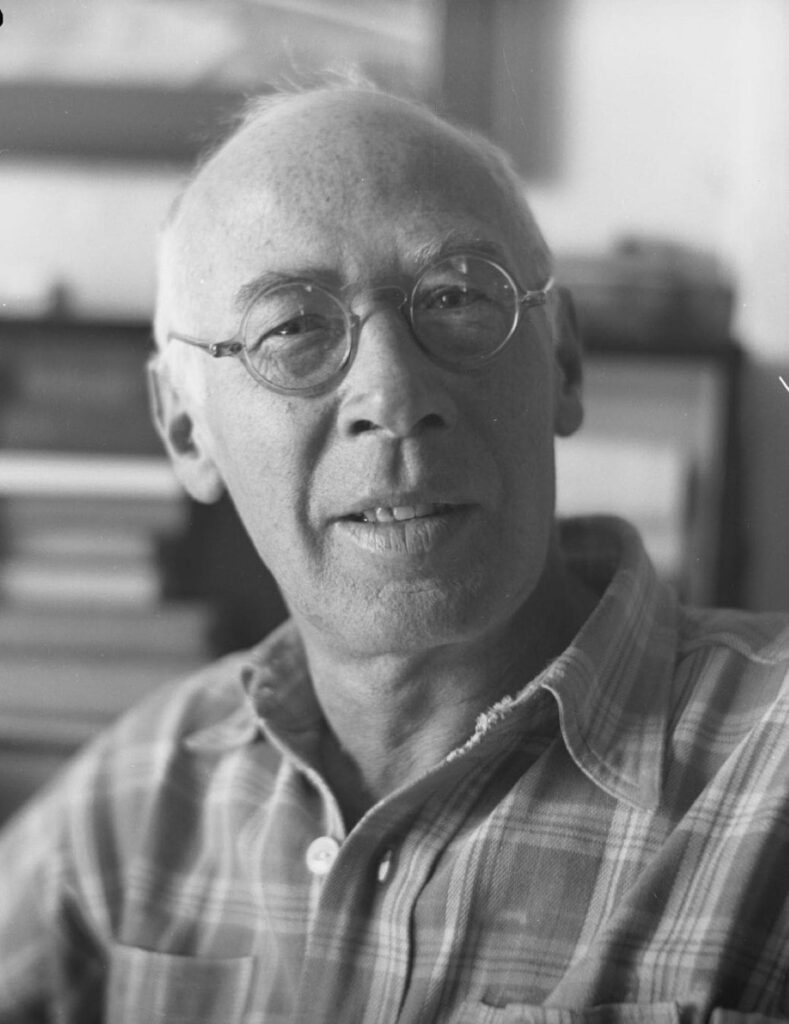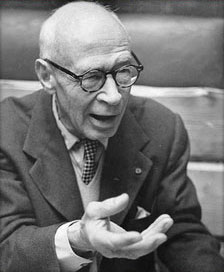Balzac and His Double, Henry Miller

Balzac and His Double
IN HIS book on St. Francis of Assisi, Chesterton endeavors to put his finger on the weakness of that sect whose members styled themselves “the true sons of St. Francis’’—the Fraticelli—and whose goal it was to carry out the complete program of St. Francis.
“What was the matter with these people,” writes Chesterton, “was that they were mystics; mystics and nothing else but mystics; mystics and not Christians; mystics and not men. They rotted away because, in the most exact sense, they would not listen to reason.
And St. Francis, however wild and romantic his gyrations, always hung on to reason by one invisible and indestructible hair.’’ In the History of Magic by Eliphas Levi we have a similar indictment of the mystics; they are condemned and vituperated because they are extremists.
In his autobiographical study called Louis Lambert, Balzac, who was a believer in the esoteric doctrine—too catholic a spirit to be a Catholic—gives us a picture of the conflict between the angel in man and the flesh which throws a different light upon the dangers which are supposed to attend the mystic in his unbridled desire for union with the infinite all.
Who was Louis Lambert? He was not only, as the story relates, le copain, the chum, the alter ego, he was Balzac’s own real self, the angelic self which was killed in the struggle with the world.
At that moment in Louis Lambert’s life when, as Balzac says, he perceived in him “the struggle of the mind reacting on itself,” he adds—“at this stage of weakness and strength, of childish grace and superhuman powers, Louis Lambert is the creature who, more than any other, gave me a poetical and truthful image of the being we call an angel.”
When in his fifteenth year he parts from his double at the College of Vendôme, he says: “You will live, but I shall die. If I can, I will come back to you.” In the story he does come back, to find Louis mad, but in life he never came back.
In taking leave of himself in this strangely prophetic manner it is interesting to note that Balzac immediately proceeds to give a physical description of his double, an exact description, including Louis’ height, adding significantly: “he grew no more!”
In the midst of his narrative, in an interlude of two short paragraphs wherein he makes a transition from the known life of his double to the subsequent and imagined life of the mystic who rotted away in the flesh, Balzac remarks that in describing Louis’ boyhood he is depicting “the unknown life to which I owe the only happy hours, the only pleasant memories, of my early days. Excepting these two years I have had nothing but annoyances and weariness.”
The book is an attempt on Balzac’s part to justify himself not only to the world, but to himself. It is a study of the ordeal and crucifixion of a genius, a defense of the real Balzac whom the world refused to acknowledge.
It is an outcry against the critics for failing to discern in the novelist the more important attribute; of thinker, visionary, prophet. (Referring to Louis Lambert he says, “I think we may deplore in him a genius equal to Pascal, Lavoisier or Laplace.”
And elsewhere in the book: “his philosophical speculations ought undoubtedly to gain him recognition as one of the great thinkers who have appeared at wide intervals among men to reveal to them the bare skeleton of some science to come. . . .”) But it was above all the failure to detect “the angel” which reduced Balzac to despair and moved him to write this harrowing study of frustration.
In the story it is the angel, which, at the price of reason and sanity, is finally liberated; but in life it is the angel which is destroyed in order that the artist may triumph. What Chesterton said of St. Francis was also true of Balzac—he too had the ability to hang on to reason by that one invisible and indestructible hair. But was it worth it?
If Louis Lambert may be said to succumb to madness—and even this admission is questionable, if one reads Balzac’s judgment carefully—he, Balzac, the man of indomitable courage and will, certainly succumbed to a worse fate.
He succumbed to fame and glory. The soaring ambitions of genius brought him nothing but trials and tribulations, brought him to the grave prematurely, at the very moment when he had hoped to sit back and reap the harvest of his tremendous labors. Even the great love, to which he struggled for seventeen years to give a solid, secure pediment, was snatched from him. He had given her in marriage the living cadaver of himself.
Just as Seraphita was written for Madame Hanska, his ideal love, so Louis Lambert was written for his “Dilecta,” Madame de Bemy, who had been to him not only a devoted mistress, but a mother as well, for Balzac had never known a mother’s love. Da Vinci had two mothers; Goethe had the best mother a genius could possibly have; but Balzac was deprived of an affection and tenderness which he needed possibly more than either Goethe or da Vinci.
His life at the College of Vendôme was a nightmare. Reserved, secretive, oversensitive, precocious, misunderstood by masters and pupils alike, he became indifferent to the world about and was forced to retire into himself—to commune with the angels. This sense of loneliness developed with the years, despite the fame and renown which he tasted early in his career.
In his letters he refers frequently to a secret which no one, not even Madame Hanska, to whom he confesses this on occasion, will ever penetrate.
At the very threshold of his career, in the year 1828, he writes that there are people who die without the doctor’s ever being able to say what it was that carried them off. The lack of maternal tenderness, the estrangement, the hatred which was shown him by his mother, left an indelible mark upon him.
His incarceration in the College of Vendôme only served to stimulate the already premature development of his spiritual nature; the man lagged behind. In fact, the man in him was never fully realized.
Balzac, throughout his life, not only felt himself to be an exile and a prisoner, but deliberately made his life a prison, in order to punish himself for a crime which he had never committed. His dismal failure as a writer, throughout the years of apprenticeship when he signed false names to his work, testifies not only to the slow development common to great geniuses but points also to the powers of frustration born of his crippled affections.
In Louis Lambert Balzac gives us the genesis of a giant moth doomed to perish in a flame of light. To grasp the true significance of this study it should be borne in mind not only that the poet was murdered at school (where all the poets are murdered!) but that the date, June-July, 1832, given for this story, represents his thirty-third year! Long before the great financial disaster, which served him as an excuse to make himself a Martyr of Work, Balzac realized that he was destined for a Purgatorial existence.
In that harrowing letter which Louis Lambert writes from his miserable garret in Paris, Balzac gives the clue to his own secret hopes and disillusionment. “Compelled to live in himself alone,” he writes, “having no one to share his subtle raptures, he may have hoped to solve the problem of his destiny by a life of ecstasy, adopting an almost vegetative attitude, like an anchorite of the early church, and abdicating the empire of the intellectual world.”
This vegetative life which he was forbidden to enjoy Balzac had tasted as a boy; it was this normal desire for natural growth, for a growth which would have altered the whole tenor of his life, which might have permitted him to become a seer rather than a novelist, it was this hunger for the opportunity to permit his real self to flower, that militated against his early development as a writer. The real Balzac is absent from the first forty volumes; it is a ghost writing.
The real Balzac is still enwrapped in the chrysalis which he had spun about himself in the College of Vendôme. What a tragic, fateful moment it was when, as a boy of fourteen, Balzac was returned to his parents by the masters of the College as a walking somnambulist, an embryonic monster of thought suffering from a “congestion de lumière.”
Even when he throws himself into life, when outwardly he seems to be fulfilling the role of a young man who is in love, who is acquiring a vocation, who is studying life, the spell in which he had wrapped himself is so strong that he has no sense of his gifts, still less of his destiny, but struggles like a worm in its cocoon in order to liberate himself from his self-imposed prison.
The young man who makes his appearance in the world, who conquers by a single glance of his magnetic eye, is simply the ghost which, by sheer force of will, succeeds in bursting the wrappings of a dormant soul. In Louis Lambert Balzac depicts himself as the dreamer who succeeds in detaching himself from his body.
In seeking to violate the laws of nature his triumph is nullified, because, as he is later to know from experience, in order to overcome the world it is first necessary to accept it. As an artist he does overcome the
